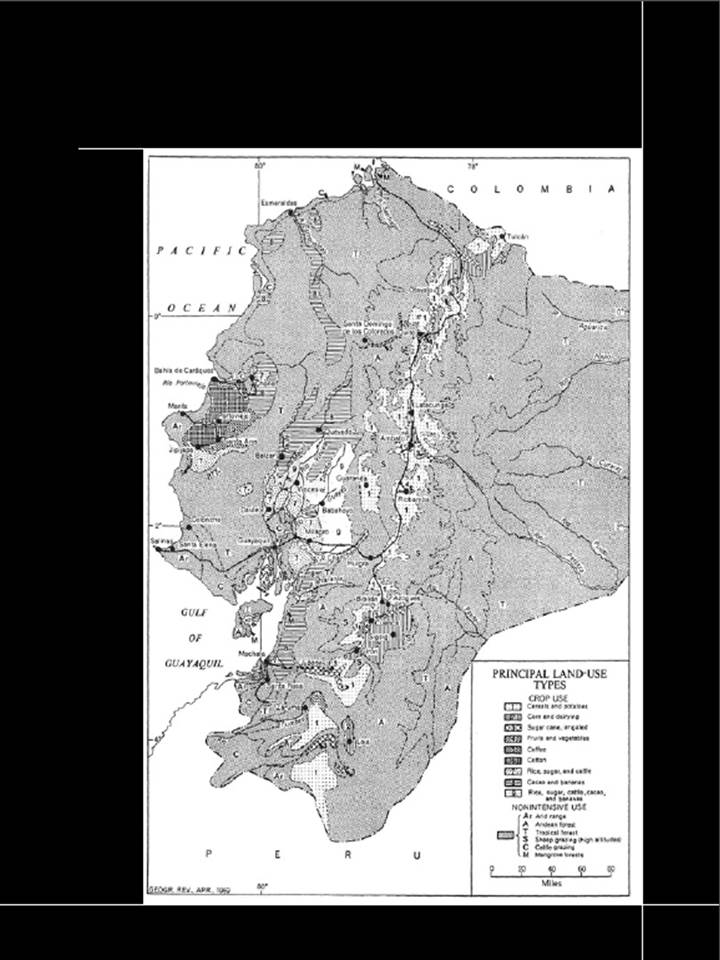Resumen
Este artículo presenta mapas de América Latina y en especial de Ecuador, realizados por cartógrafos, científicos y planificadores estadounidenses durante e inmediatamente después de la Segunda Guerra Mundial. Algunos de estos mapas fueron confidenciales hasta hace pocas décadas, otros fueron públicos. Se analizan estos mapas como artefactos de poder, dibujos de los territorios utilizados para controlar las sociedades y la naturaleza y para construir hegemonía. Los mapas se abordan en tanto reflejos de un deseo estadounidense: el de construir el territorio latinoamericanocomo una bodega de materias primas complementarias a su economía y su producción. Se concluye que estos mapas fueron cruciales para la monopolización por parte de Estados Unidos de la extracción de las materias primas y para impulsar el desarrollo.La revista Apuntes se encuentra registrada bajo la licencia Creative Commons Reconocimiento 4.0 Internacional. Por lo tanto, esta obra se puede reproducir, distribuir y comunicar públicamente en formato digital, siempre que se reconozca el nombre de los autores y a la Pontificia Universidad Javeriana. Se permite citar, adaptar, transformar, autoarchivar, republicar y crear a partir del material, para cualquier finalidad (incluso comercial), siempre que se reconozca adecuadamente la autoría, se proporcione un enlace a la obra original y se indique si se han realizado cambios. La Pontificia Universidad Javeriana no retiene los derechos sobre las obras publicadas y los contenidos son responsabilidad exclusiva de los autores, quienes conservan sus derechos morales, intelectuales, de privacidad y publicidad.
El aval sobre la intervención de la obra (revisión, corrección de estilo, traducción, diagramación) y su posterior divulgación se otorga mediante una licencia de uso y no a través de una cesión de derechos, lo que representa que la revista y la Pontificia Universidad Javeriana se eximen de cualquier responsabilidad que se pueda derivar de una mala práctica ética por parte de los autores. En consecuencia de la protección brindada por la licencia de uso, la revista no se encuentra en la obligación de publicar retractaciones o modificar la información ya publicada, a no ser que la errata surja del proceso de gestión editorial. La publicación de contenidos en esta revista no representa regalías para los contribuyentes.


